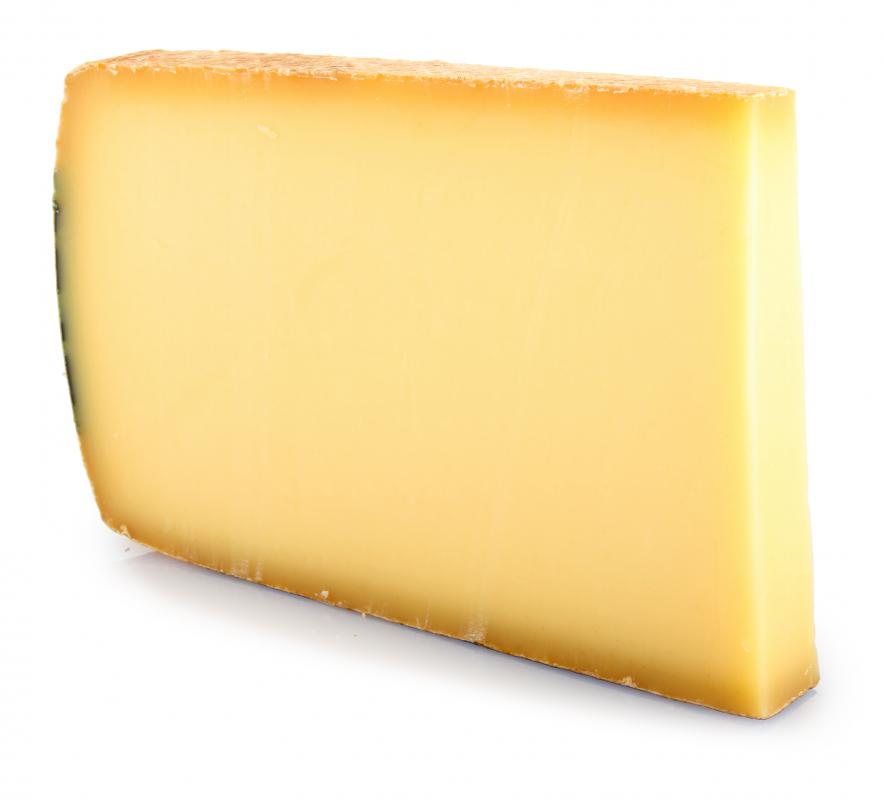At DelightedCooking, we're committed to delivering accurate, trustworthy information. Our expert-authored content is rigorously fact-checked and sourced from credible authorities. Discover how we uphold the highest standards in providing you with reliable knowledge.
What is the History of Fondue?
The history of fondue is an interesting one for anyone who enjoys dipping into the past to understand the culinary revels of today. Fondue is almost always considered of Swiss origin, with beginnings in the 1950s. The date is actually incorrect, and there are disputes about whether the Swiss actually “invented” fondue. Moreover, what most people think of as fondue today (melted cheese with bread cubes, cooked beef in oil, or melted chocolate) are not the fondues of the past.
The early history suggests that the melted cheese type of fondue was likely peasant food, a good way to use up hard cheese and leftover bread. Just how early peasants created the recipe, however, and whether this was exclusive to France or Switzerland or common in both remains shrouded in mystery. The earliest printed recipes are attributed to regions that were independent of both countries, and later became part of Switzerland, and these recipes, appearing as early as the late 1600s, add eggs to pot.

Melted cheese, typically Gruyere, was added to eggs, which were then scrambled. This suggests that the original fondue was actually a form of cheese souffle. Essentially, there are two different “fondue dishes,” both including eggs, and neither one like the cheese fondue of today.
In the early 20th century, recipes finally emerge that sound like modern cheese fondue, with the publication of Madame Saint-Agne’s French cookbook La Bonne Cuisine in 1927. This is where some historians claim that fondue, as it is known today, truly emerges. The cookbook is French, not Swiss.

Another important point in the history of fondue is the introduction of meat, thought to have been created in New York City in the 1950s by Chef Konrad Egil of the Chalet Swiss Restaurant. On the other hand, making fondue with meat may date back much further, and is sometimes credited to monks in France or workers in vineyards. Whatever its origin, meat, typically beef, was dipped into boiling oil. This may have been inspired by cuisines far from the US, France, and Switzerland. Tableside cooking of foods is common in numerous Asian cuisines. Additionally, several melted cheese recipes in Spanish and Mexican food, such as queso de fundido cheese and sausage, may predate Saint-Agne’s melted cheese recipe.

In the 1960s and 1970s, fondue parties in America became exceptionally popular, adding yet another chapter to the history of fondue. People might serve just cheese (with cheeses like cheddar and Gouda being popular choices), or they might serve a full course of cheese and then beef. Shoppers can still find fondue pots in any kitchen supply shop in the US, accompanied by fondue forks for beef or toasted bread, so people can dip accordingly. By 1964, dessert at such a party might include chocolate fondue, where people dipped fruit, marshmallows, or small cookies into melted chocolate.

The Swiss and many French provinces still serve fondue, and it’s not hard to find it in Switzerland. By the end of the 1970s in America, fondue parties fell out of vogue, though they have made a comeback starting in the late 1990s and early 2000s. It can be fun to host one, and it is clearly a lot easier to prepare modern fondue of any type than it is to determine the definitive and undisputed history of this culinary form.
AS FEATURED ON:
AS FEATURED ON:















Discussion Comments
First of all your recipes are great. The blend of cheese and wine are great comfort foods. I think it's important to blend the foods we eat with the history and origins of the foods we eat.
Where fondues are concerned, I think it is important to note that only the history of the dish is written down for the past four hundred years. I believe the origins of the dish to be much older than these.
When you think that cheese making dates back to before Christ during the Greek and Roman empire, along with wine, and then you compare breads of that period, which were hard breads. Then you realize that armies and herdsman of the time used these same foods to maintain themselves, it is quite possible that fondue as we know it today has a much deeper history than the 1600s. It would have spread throughout the world from Alexander the Great and the Roman Empire through their armies into every segment of the known world.
There are good recipes for fondue sauce available on the internet, and these make for a great family favorite.
The word "fondue" means melt, and the concept of melting cheese or chocolate is what makes it delicious. In the cold alpine climate, the idea of melting by the fire and enjoying delicacies such as these is quite appealing.
There is no shortage of delicious recipes coming from Switzerland. You have never had real chocolate or cheese until you have eaten authentic Swiss food. One of my best friends from school is from Switzerland and provides me with a healthy helping of chocolate whenever he returns from home.
Mountain nations such as Switzerland, Nepal, and Afghanistan, are shrouded in a history of multiple tribes and nations vying for dominance. Due to the tough terrain of places like these, there is constant historical ambiguity concerning who was in charge of what area when. This makes the origin of fondue difficult to trace exactly.
Post your comments